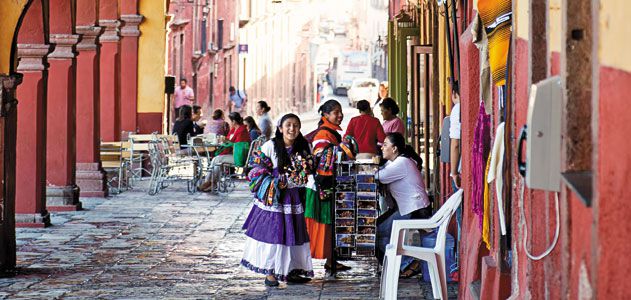Seven years ago, Smithsonian magazine collaborator and author Jonathan Kandell published an extensive editorial piece on San Miguel de Allende that narrates how the first expats arrived in the 1930’s, just a few years before WWII started. Here’s an interesting read for all expats (or expats-to-be) in Mexico….
Ever since American Stirling Dickinson arrived there in 1937, the Mexican town has been a magnet for artists and U.S. expatriates.
In 1937, after several months spent traveling through Mexico, a gangly, 27-year-old Chicago native named Stirling Dickinson, who had been somewhat at loose ends since graduating from Princeton, got off a train in San Miguel de Allende, an arid, down-on-its-luck mountain town 166 miles northwest of Mexico City.
Taken from the ramshackle train station by a horse-drawn cart, he was dropped off at the town’s leafy main square, El Jardín. It was dawn, and the trees were erupting with the songs of a thousand birds. At the eastern side of the square stood the Parroquia de San Miguel Arcángel, an outsize, pink-sandstone church with neo-Gothic spires, quite unlike Mexico’s traditional domed ecclesiastical buildings. The first rays of the sun glowed over mountain ridges to the east. “There was just enough light for me to see the parish church sticking out of the mist,” Dickinson would later recall. “I thought, My God, what a sight! What a place! I said to myself at that moment, I’m going to stay here.”
Founded in 1542, the settlement of San Miguel had grown rich from nearby silver mines during centuries of Spanish rule, then fell on hard times as the ore was depleted. By the time Dickinson got there, the War of Independence from Spain (1810-21) and the even bloodier Mexican Revolution (1910-21) had further reduced the town to 7,000 inhabitants—less than a quarter of its population in the mid-1700s. Houses languished in disrepair, with shattered tile roofs and crumbling, faded walls.
Dickinson made his home in a former tannery on San Miguel’s higher reaches and soon became a familiar sight, riding around town on a burro. For the next six decades, until his death in 1998, he would lead a renaissance that would transform tiny San Miguel into one of Latin America’s most magnetic destinations for artists and expatriates, most of them American, looking for a new venue—or a new life.
Click here to read full article on The Smithsonian website.
Source: http://www.smithsonianmag.com/




